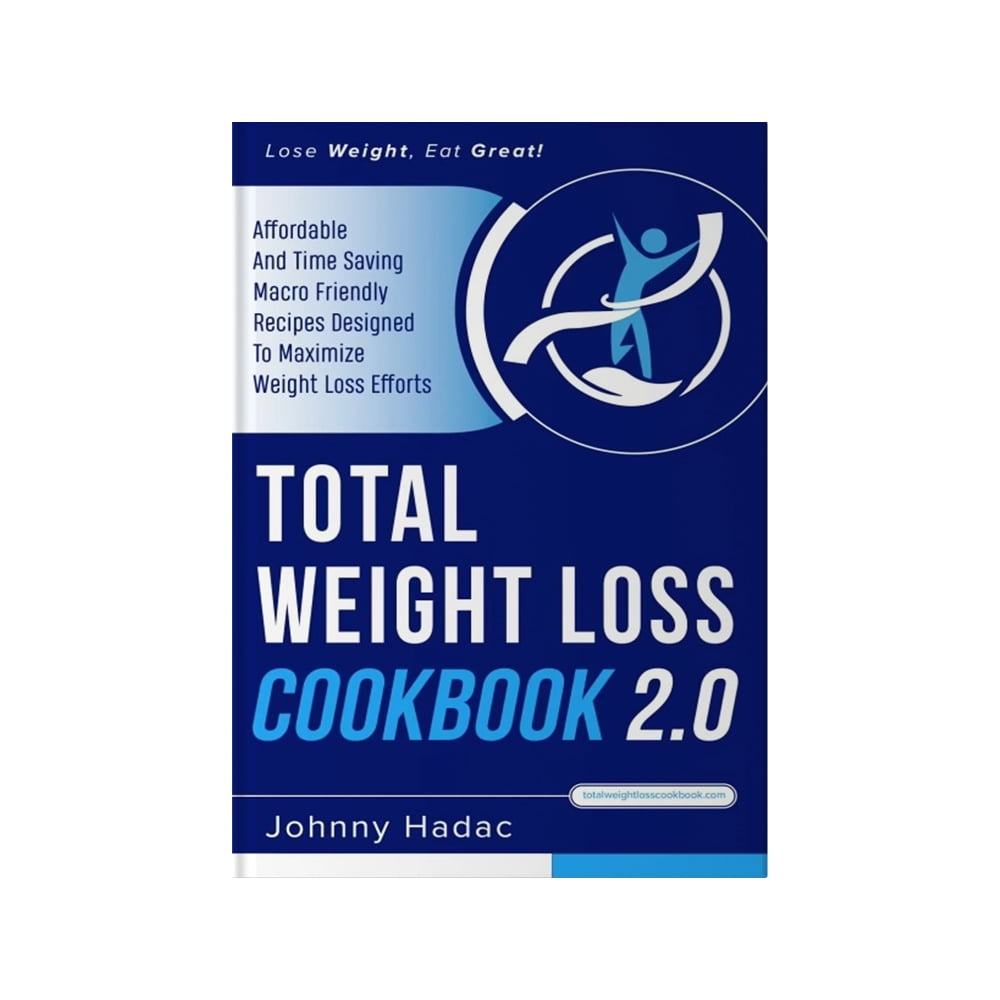In the crowded world of diet plans and quick fixes, the Total Weight Loss Cookbook stands out for a refreshingly simple reason—it’s about food you actually want to eat. With more than 350 macro-friendly recipes, it isn’t built on crash diets or gimmicky “miracle” foods. Instead, it uses well-balanced meals to help you naturally manage calorie intake, support metabolism, and maintain energy levels, all while fitting into real life.
For U.S. adults aiming to lose weight naturally without extreme restrictions, this cookbook offers both practical recipes and a nutritional approach rooted in research. But how does it actually work? Let’s take a closer look.

What Is the Total Weight Loss Cookbook?
The Total Weight Loss Cookbook is a comprehensive meal-planning resource that combines:
-
Balanced macronutrients (protein, carbs, healthy fats)
-
Portion-controlled recipes
-
Meal-prep strategies for convenience
-
Nutritional tips for metabolism support
It’s designed to help readers lose 10–15 pounds over several weeks while still enjoying satisfying meals. Unlike single-ingredient “weight loss supplements,” this is a dietary framework built around whole foods—lean proteins, complex carbohydrates, and healthy fats—aligned with modern weight management science.
A Brief History & Popularity Surge
Cookbooks for weight loss aren’t new, but the Total Weight Loss Cookbook gained traction because it merges macro tracking with accessible recipes. This mirrors a wider trend in the U.S. toward:
-
Flexible dieting (“If It Fits Your Macros”)
-
Science-backed portion control
-
Meal prepping for consistency
Social media, especially TikTok and Instagram, helped fuel interest—particularly among people frustrated with rigid diets.
How the Cookbook Supports Weight Loss: The Science
1. Appetite Regulation
Many recipes are high in protein and fiber, both known to help with satiety.
-
Protein slows digestion and triggers satiety hormones like GLP-1 and peptide YY.
-
Fiber adds bulk to meals, supporting fullness without excessive calories.
A 2020 review in Nutrients found that high-protein diets could lead to an average 1–3 kg greater weight loss over 12 weeks compared to lower-protein diets.
2. Metabolic Efficiency
Macro-balanced meals may help maintain lean muscle mass during calorie deficits, which keeps resting metabolic rate higher.
-
Protein has a higher thermic effect (burns more calories during digestion) than carbs or fats.
-
Balanced carb timing in recipes may stabilize blood sugar, avoiding energy crashes.
3. Reduced Decision Fatigue
Pre-planned meals eliminate the “What should I eat?” dilemma—a common barrier to sticking with a weight loss plan. Consistency is one of the most reliable predictors of long-term weight management success.
Research Evidence & Expert Insights
While there’s no peer-reviewed trial specifically on the Total Weight Loss Cookbook, its principles align with well-established findings:
-
Harvard School of Public Health notes that high-protein, high-fiber, whole-food diets are linked to sustainable weight loss.
-
A 2021 Obesity Reviews meta-analysis found structured meal plans led to an additional 1.2–4.5 kg weight loss compared to unstructured diets over 6–12 months.
Registered dietitian comment:
“This cookbook’s emphasis on macro balance and meal prep is consistent with what we recommend in clinical weight management programs. It’s practical, not punitive.” — L. Jackson, RDN
Practical Application: Using the Cookbook in Daily Life
Meal Structure Examples
-
Breakfast: Greek yogurt parfait with berries, flaxseed, and high-protein granola
-
Lunch: Grilled chicken quinoa bowl with roasted vegetables
-
Dinner: Baked salmon with sweet potato mash and steamed broccoli
-
Snack: Cottage cheese with sliced apple and cinnamon
Meal Prep Tips from the Book
-
Cook proteins in bulk for quick assembly
-
Use freezer-friendly recipes for busy weeks
-
Pair each meal with at least one high-fiber plant food
Safety & Potential Risks
Because this is a food-based approach, risks are minimal compared to supplement-based weight loss products. However:
-
People with kidney disease may need to moderate protein intake
-
Those with food allergies must check recipes carefully
-
Calorie deficits should not be overly aggressive; under-eating can cause fatigue, nutrient deficiencies, and muscle loss
Always consult a healthcare professional before making major dietary changes.
Integrating the Cookbook Into a Healthy Lifestyle
The cookbook is most effective when combined with:
-
Regular exercise (both resistance and cardio)
-
Adequate sleep (7–9 hours)
-
Stress management (meditation, yoga, or leisure activities)
-
Hydration (aiming for ~2 liters daily)
FAQ about Total Weight Loss Cookbook
1. How much weight can I lose using the Total Weight Loss Cookbook?
Results vary, but a reasonable target is 0.5–2 pounds per week when combined with a calorie deficit.
2. Do I need to count calories?
While recipes are portion-controlled, tracking can help some people stay consistent.
3. Can vegetarians use it?
Yes—many recipes have plant-based protein swaps.
4. Is it safe for older adults?
Generally, yes, but protein needs and calorie intake may require adjustment.
5. Do I have to follow it exactly?
No—the cookbook offers flexible swaps and seasonal ingredient options.